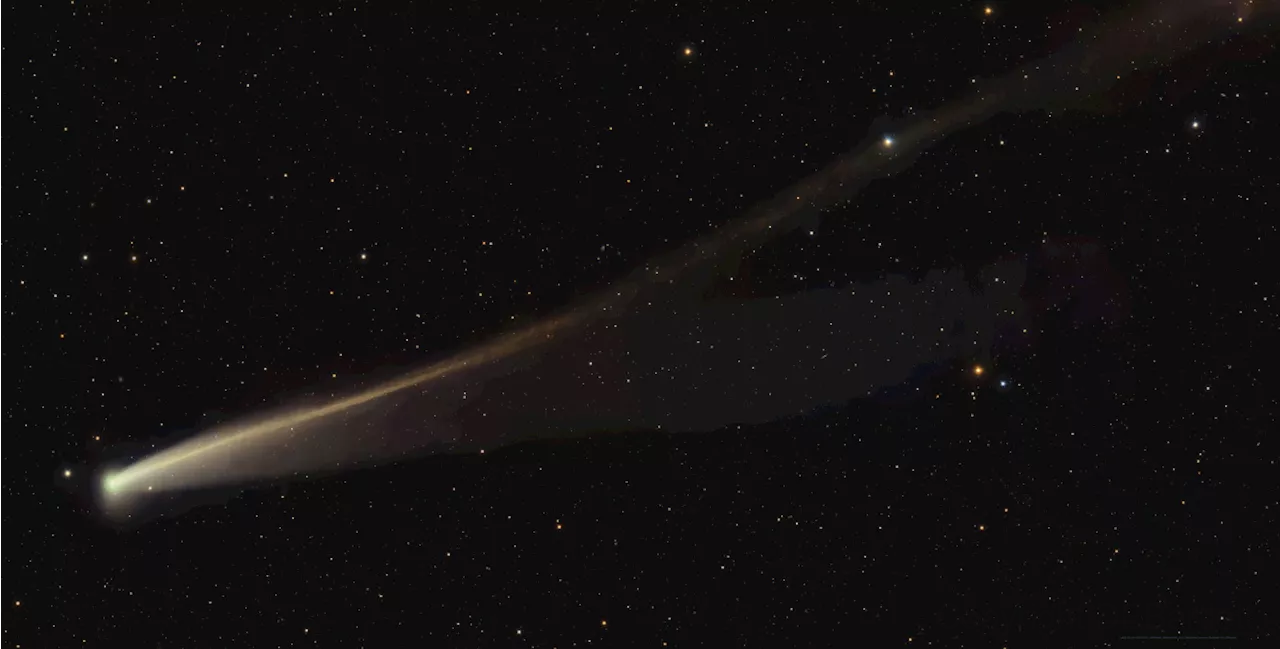UPDATE: Astronomers are in awe as the rare comet, C/2025 K1 (ATLAS), displays a stunning golden hue, defying predictions of disintegration. This extraordinary celestial body is now visible with binoculars, captivating stargazers worldwide.
Just confirmed, this comet survived its October 8, 2025 perihelion—a point when it comes closest to the sun—and is now shining brightly in the night sky. Unlike typical comets that appear green or blue, C/2025 K1 showcases an unusual red-brown-golden color that has astronomers buzzing with excitement. “This comet was not supposed to survive its perihelion,” said astronomer Dan Bartlett, who has been tracking it from June Lake, California. “But it did survive, and now it is displaying a color rarely seen in comets.”
First spotted in May 2025, C/2025 K1 is classified as an Oort cloud comet, discovered by the Asteroid Terrestrial-impact Last Alert System. Its unique composition has drawn particular attention; the carbon ratios are notably low compared to typical comets. Observations from the Lowell Observatory reveal that all carbon-bearing species, including CN, are unusually low compared to hydroxide ions. “Only two other comets have been found to have lower ratios,” noted David Schleicher of the Lowell Observatory.
Now classified at a 9th magnitude, C/2025 K1 is easily observable from backyards. Stargazers are encouraged to look towards the boundary between Virgo and Leo in the eastern sky shortly before sunrise for the best view. “The comet is fairly impressive,” Bartlett added, signaling that this is a moment not to be missed.
Experts had previously warned that C/2025 K1 might disintegrate, but its survival opens up possibilities for further observations and study. Its continued brightness offers a chance for amateur astronomers to engage with a celestial event that is rare and significant.
As this golden comet continues to capture the attention of both the scientific community and the general public, astronomers are eagerly monitoring its path. The unique characteristics of C/2025 K1 may provide insights into the composition of comets and their behavior as they approach the sun.
Stay tuned for more updates as this story develops. Don’t miss the chance to witness this extraordinary comet—check your local sunrise times and prepare your binoculars!







